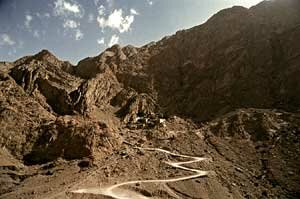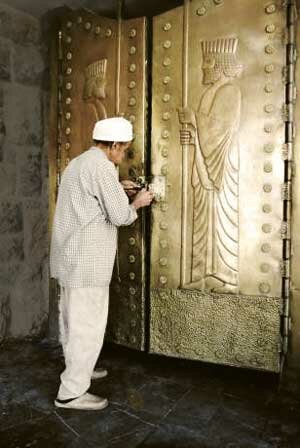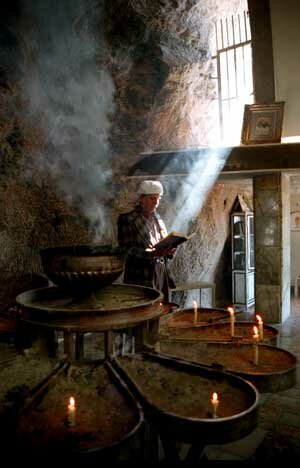Within every corner of my homeland, wherever there is a trace of life, there is a temple of worship to remember God out of spirituality and thankfulness.
One of the oldest and greatest of all the temples dispersed around this ancient land is the Zoroastrian temple of Chak Chak, also known as Pire Sabze Chak Chakoo, dating back to pre-Islamic period.

The gravel road to the temple
Chak Chak temple is revered for its spiritual values in the hearts of the followers of the ancient Iranian religion. When we visit the site, it gives us the impression of being able to touch the sky, and for some precious moments we can put ourselves in the shoes of our ancestors and feel the same way they did long time ago.
The fact that caves and cracks within the rocky slopes of the mountains had long been a refuge for spiritual people to sit in, in absolute isolation and meditate should come as no surprise.
The entrance of the temple is reached through a two-planked doorway over which stands an embossed image of two Achamenian soldiers.
When we walk through the doors, we come across a cozy and private cave paved with concrete Malachite (green marble) and a chandelier slanting from the ceiling. The temple has got an altar in which there are three oil-burning lights with a container of oil right beside them.

A custodian takes us inside the temple
In front of the altar, there is a set of trays combined in such a way as to look like a lotus flower from above and serves as a place to receive donations from pilgrims. Donations could also include other revered items such as cucumbers and oranges to be placed on this large tray in the center of the temple as offerings.
There are also some window-like open spaces or holes within the cave over which huge branches of the near-by tree, extends inside the temple and a small water fall that keeps the Malachite stage of the alter wet upon which no one is allowed to step.
The word Chak Chak stands for "falling in drops" or "drop by drop". The name refers to the water leak from within the roof of the temple. Zoroastrians view this as a sacred incident where Anahita, the angel of water, pregnancy and prosperity is venerated in the same way.



